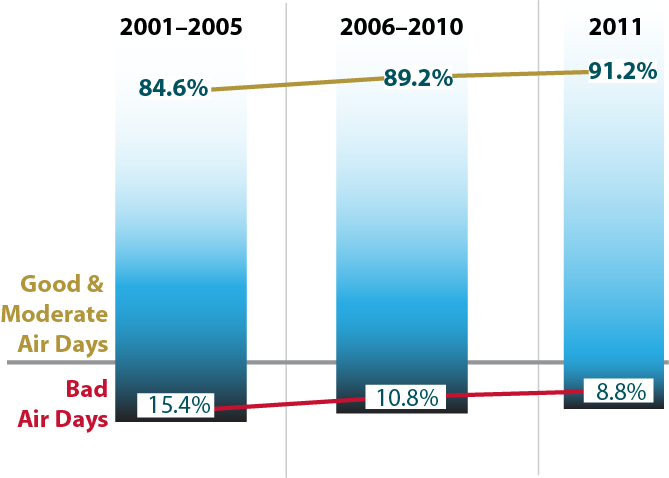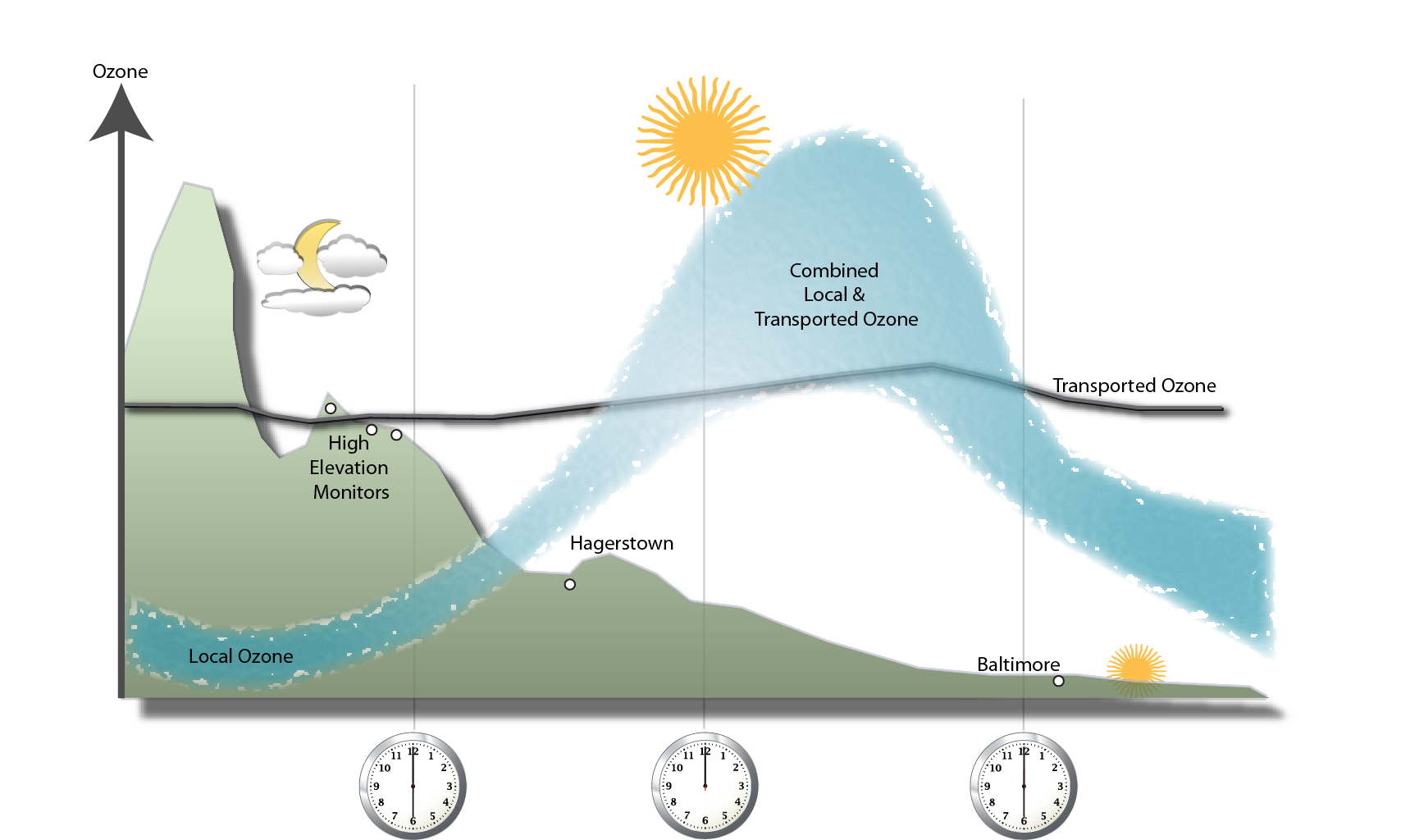Air Quality Awareness Week 2016, May 2 - May 6
Main_Content
Maryland's air quality has improved dramatically in recent years. These improvements have direct implications for public health, our quality of life and the economy. However, there is still much work to be done. The Maryland Department of the Environment encourages everyone to learn how air quality affects your health, follow our air quality forecasts and take steps to help keep Maryland's air clean.
Facts about Clean Air in Maryland
- Ozone and fine particulates are Maryland’s biggest air issues. Both pollutants are created from fuel-burning sources such as vehicles, electric utilities and industrial boilers. These pollutants can irritate the respiratory system causing coughing, throat irritation and chest pains. These pollutants are also linked to premature mortality.
- Ozone is a gas that occurs in two layers of the atmosphere. When ozone is up high it is considered “good” as it protects us from the sun’s ultra-violet rays, however when ozone occurs near ground-level it becomes harmful to human health and our environment.
- Particle pollution (also called particulate matter or PM) is the term for a mixture of solid particles and liquid droplets found in the air. Some particles, such as dust, dirt, soot, or smoke are large or dark enough to be seen with the naked eye. Others are so small, they can not be seen by the naked eye.
- For the first time in three decades, Maryland is very close to meeting all federal health-based air quality standards.
 Reductions in emissions from utilities, motor vehicles, manufacturing, consumer products and more have reduced the number of days on which Marylanders breathe unhealthy air.
Reductions in emissions from utilities, motor vehicles, manufacturing, consumer products and more have reduced the number of days on which Marylanders breathe unhealthy air.- Maryland has continued to see the percentage of “good” and “moderate” clean air days increase steadily with the help of programs such as the Maryland Clean Cars Program and the Maryland Healthy Air Act. These programs reduce emissions from the two leading contributors to air quality: cars and power plants.
- While beneficial weather patterns and cooler summer temperatures in recent years have played a part in reducing air pollution, emissions reductions resulting from Maryland's air quality regulations have reduced the number of days that Maryanders breathe unhealthy air.
- New regulations build on the success of the Maryland Healthy Air Act and require further air pollution reductions from the state's coal-fired power plants.
Maryland's Healthy Air Act and Clean Cars Program
- Two of Maryland’s most successful pollution control programs are the Maryland Healthy Air Act and the Clean Cars Program. These programs represent two of the nations toughest programs aimed at curbing pollution from power plants and cars.
- The Maryland Healthy Air Act is the toughest power plant emission law on the east coast. The Healthy Air Act requires reductions in nitrogen oxides (NOx) and sulfur dioxide (SO2). The Act also requires control of mercury emissions and greenhouse gases (GHGs). The Healthy Air Act reduces power plant NOx emissions by 75% and SO2 emissions by 85% at full implementation.
- The Maryland Clean Cars Program requires California’s stricter vehicle emission standards. These new car standards became effective in Maryland for model year 2011 vehicles, significantly reducing a number of emissions including volatile organic compounds (VOCs), NOx and GHGs.
The Science of Transport
 Local control programs like the Healthy Air Act and Clean Cars Program have helped improve Maryland's air quality, but work remains. Pollution standards in other states upwind of Maryland are just as important to improving air quality as ensuring local pollution sources reduce emissions.
Local control programs like the Healthy Air Act and Clean Cars Program have helped improve Maryland's air quality, but work remains. Pollution standards in other states upwind of Maryland are just as important to improving air quality as ensuring local pollution sources reduce emissions.- MDE’s cutting edge science program has identified three specific types of “transported” air pollution. The majority of transported air pollution comes to Maryland from the states to the west and the south. Summertime “Bermuda High” weather patterns pull pollution from the Ohio River Valley straight into Maryland. At night, transported air pollution can come from the south from a meteorological phenomena known as the “low level jet”. There is also local city-to-city transport that occurs during the day between Washington, Baltimore and Philadelphia.
- Transported pollution collects in a reservoir of bad air that sits over Maryland – about 2,000 feet above the surface each night. As you can see in the image above, in the morning, when the sun begins to heat the earth, the bad air is pushed down, creating high levels of ground-level ozone and affecting the air we breathe.
The Problem with Transport Pollution
- Poor air quality does not stop at state borders. Research shows that pollution from upwind states accounts for up to 70 percent of the ozone levels recorded in Maryland.
- Maryland has played a critical role in recent years in bringing together more than 20 states to see where progress can be made to address transported pollution.
- The U.S. Environmental Protection Agency's updated Cross State Air Pollution Rule requires power plants to reduce emissions that contribute to air pollution in other states. Maryland power plants are already subject to Maryand regulations that are more stringent than the federal limit.
Related Links
Contact
For general inquires call 410-537-3000 or 800-633-6101
For more information on a specific MDE program or environmental emergency, view our Numbers to Know